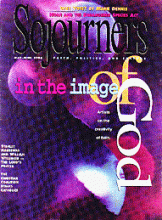Buddhist meditation teacher Jack Kornfield tells the story of visiting an island temple in Vietnam during the war. At the top of the hill were two 60-foot-tall statues-Buddha and Jesus standing with arms around each other-incarnations of peace and hope as military helicopters flew past. This compelling image of compassion and reconciliation embodies for me the rich possibilities of interfaith dialogue offered in Living Buddha, Living Christ by the wise and beloved Vietnamese monk Thich Nhat Hanh.
While Christianity was a vehicle of colonization in Vietnam, Nhat Hanh has been compelled by the wisdom of a living practice exemplified by such sojourners as Martin Luther King Jr., Thomas Merton, and Daniel Berrigan (who reciprocally have honored him as a spiritual brother). Drawing on many years of interfaith exchanges begun during his peace trips to America, Nhat Hanh (or Thay for teacher) offers bridging insights into points where Buddhist and Christian practices meet. In so doing, he encourages Westerners to see the "jewels in their own tradition" with fresh eyes.
Thay's emphasis on "transformational practice" exemplifies his profound sense that it is our daily lives, not books or sermons, that embody a continuation of the "living Buddha" and "living Christ." Most of us would agree that an integrated living faith is nourished by regular prayer and contemplation, but many of us find it difficult to "make time" in the rush of family and work. Further, devotional life has often been seen as a personalist activity, while those engaged on the front lines of midwifing kingdom ethics in the home and in the world often get caught up in urgent actions that seem to leave no time for sustaining spiritual practices. It is this division between devotional and daily life that Thay's teachings on mindfulness practices may help to address.
Read the Full Article
